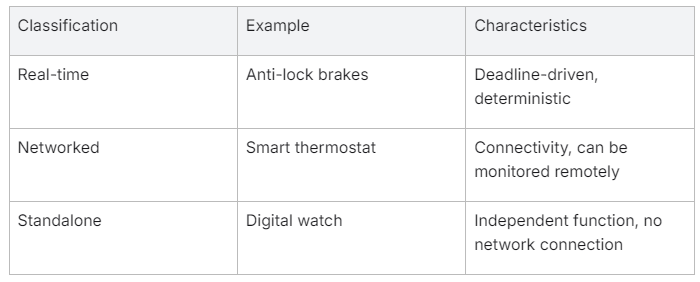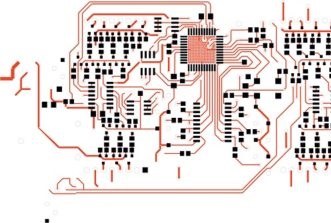Embedded Engineering: Ultimate Guide
20/05/2024, hardwarebee
At its core, embedded engineering focuses on integrating software with hardware to create specialized systems designed to perform specific tasks. It’s the invisible thread that connects the fabric of our digital lives, proving vital in countless applications across diverse industries. As we uncover the essence of embedded engineering, we’ll explore the expansive realm of embedded systems, the pivotal role of embedded engineers, and how their work propels the boundaries of innovation.
Embarking on this journey, we navigate through the embedded engineering landscape, from the foundational elements and processes to the industry-specific applications and the programming that breathes life into these complex systems. Join us as we delve into the heart of embedded engineering where every byte and beat of technology harmonizes to create the symphony of our modern world.
Definition of Embedded Engineering
Embedded engineering is a specialized field that focuses on the creation and integration of software and hardware within a device that is designed to perform a dedicated function or functions. Unlike traditional computers, embedded systems are often part of a larger machine or system and are intended to operate in real-time or within strict timing constraints. Embedded engineering encompasses the entire process of designing, developing, programming, and testing the integrated hardware and software components within these systems.
What is Embedded Engineering?
Embedded engineering involves the development of computing systems that are “embedded” into the infrastructure of devices, providing essential processing capabilities for a wide variety of applications. These can be as simple as a digital alarm clock or as complex as a sophisticated aviation control system. Embedded systems engineers require a deep understanding of both hardware and software, as their job entails designing the system architecture, developing firmware, and optimizing the performance and reliability of the device. Programming languages such as C, C++, and assembly are frequently utilized in embedded development due to their ability to offer fine-grained control over hardware.
Importance of Embedded Engineering in Today’s World
In the current technological era, embedded engineering is indispensable since it lies at the core of countless consumer electronics, medical devices, and automotive technology. The integration of embedded systems in various sectors has resulted in smarter, more efficient, and interconnected products. For instance, in the medical field, embedded systems ensure the precise operation of equipment like pacemakers and imaging devices. Automotive’s embrace of embedded engineering has led to innovations in safety, entertainment, and engine control systems. Furthermore, in consumer electronics, embedded technology makes possible the compact, versatile devices that are now integral parts of daily life.
Embedded engineers play a critical role in ensuring the successful completion of product development and the continual innovation within a range of industries. The quest for improvement in real-time operation, reliability, and communication protocols within embedded systems also fuels advancements in other technology sectors. Consequently, embedded engineering not only powers the devices and systems we use today but also influences the trajectory of future technology advancements.
Overview of Embedded Systems
Embedded systems are specialized computing solutions that blend hardware and software to perform specific, often complex functions within larger mechanical or electrical systems. These systems are designed to handle specific tasks and are engineered to optimize power consumption, size, and performance, making them distinctly different from general-purpose computers like desktops and laptops.
Understanding Embedded Systems
The core of any embedded system is its microcontroller or microprocessor, which executes software-coded instructions to perform its tasks. An embedded system typically includes three main components: the processor, which is the ‘brain’ of the system; the memory, which stores the code and data; and the input/output (I/O) peripherals, which enable the system to communicate with the external world or other parts of the machine. Since embedded systems are often integral to the device’s function, they must be reliable and able to operate continuously without failure.
Embedded systems are found in a multitude of applications that span nearly every industry—from simple household appliances to complex satellite systems. They are often designed to execute a real-time operating system (RTOS) or may operate on bare-metal without OS overhead, making them ideally suited for time-critical tasks. Embedded engineers are responsible for tailoring the system to its application, which involves creating and testing software, selecting appropriate hardware, and ensuring efficient system integration.
Types of Embedded Systems
Embedded systems can vary significantly in complexity and application, falling into several categories. These systems can be broadly classified based on their performance and functional requirements as:
- Real-time embedded systems: These are critical for applications requiring strict timing constraints, like airbag systems or pacemakers.
- Networked embedded systems: These systems are connected to a network (wired or wireless) to provide output to other systems, such as modern home security systems.
- Standalone embedded systems: These do not require a host system or network and function independently. Typical examples include microwave ovens and digital cameras.
Another way to categorize embedded systems is by their microcontroller bit size, such as 8-bit, 16-bit, or 32-bit systems, which reflects the system’s processing power and the complexity of tasks it can handle.
To help in understanding, here is a simple table illustrating types of embedded systems:
Overall, embedded systems can take numerous forms depending on the specific needs they need to meet, including varying sizes, processing capabilities, and connectivity options. Each type requires engineers with a unique set of skills to ensure they work as intended within their respective environments.
Role of an Embedded Engineer
Embedded engineers play a crucial role in the development and implementation of specialized computing systems. They combine a deep understanding of software and hardware to create integral parts of a wide range of products. An embedded engineer’s task is to bridge the gap between system design and implementation, focusing on integrating computing power into devices that are not traditionally thought of as computers.
These professionals are instrumental in every phase of the product development cycle, from conceptualization to the successful completion of a project. They work on a variety of components including firmware development, creating custom software to run on the embedded device, and designing the necessary circuitry and hardware interfaces for the device’s operation.
Their expertise is critical in ensuring that embedded systems run efficiently and reliably within tight power and space constraints, and often within real-time operational frameworks. For instance, in automotive technology, an embedded engineer might work on car entertainment systems, control systems, or sensor interfaces.
With the growing sophistication of technology and intelligence being added to even the smallest of devices, embedded engineers are at the forefront of innovation and product enhancement, embedding intelligence in everything from smart appliances to advanced medical devices.
Responsibilities of an Embedded Engineer
The responsibilities of an embedded engineer are diverse and involve several technical and creative tasks. Key responsibilities typically include:
- Designing and implementing software of embedded devices and systems from requirements to production and commercial deployment.
- Designing, developing, coding, testing, and debugging system software.
- Reviewing code and design to improve system reliability, efficiency, and robustness.
- Integrating and validating new product designs, working with hardware design and assessment.
- Analyzing and enhancing efficiency, scalability, and stability of system resources.
- Interfacing with hardware design and development, and providing post-production support.
- Assessing third-party and open-source software to ensure they are fit for the system’s needs.
The embedded engineer is also expected to collaborate effectively with other team members and stakeholders, maintaining documentation throughout the software development life cycle (SDLC) and staying updated with current and emerging trends within embedded systems engineering.
Skills Required for Embedded Engineering
A successful career in embedded engineering requires a specialized set of skills that encompass both software and hardware disciplines. Here is a list of essential skills:
- Programming Knowledge: Proficiency in programming languages such as C/C++, Python, and assembly language, which are standard in firmware and driver development.
- Understanding of Microcontrollers & Processors: Familiarity with various microcontrollers, processors, and the ability to program and optimize them for specific tasks.
- Knowledge of Operating Systems: Experience with real-time operating systems (RTOS) as well as familiarity with Linux/Unix.
- Hardware Skills: Skills in circuit design, PCB design, and the understanding of digital and analog electronics are paramount.
- Problem-Solving Ability: The aptitude to troubleshoot and debug complex systems involving both software and hardware.
- Software Design: Strong grasp of software engineering principles and the ability to design robust, reusable, and maintainable code.
- Communication Protocols: In-depth knowledge of communication protocols (e.g., SPI, I2C, UART, CAN), essential for device connectivity and network communications.
- Project Management: Ability to manage projects, understanding the requirements, and delivering within deadlines while working as part of a team or independently.
- Hands-On Experience: Practical experience with embedded system design and the cohort of tools used for development, simulation, and testing.
Ultimately, an embedded engineer needs a blend of creativity, curiosity, technical expertise, and a hands-on approach to build and innovate within a diverse set of applications and industries.
Embedded Engineering in Different Industries
Embedded engineering is an interdisciplinary field that intersects with a myriad of industries. The development of embedded systems has become a cornerstone for technological advancement, underpinning the innovation and functionality of a broad spectrum of industry products. This specialized engineering sector contributes to the creation of complex electronics that enhance product features, improve safety, and offer connectivity and real-time data. Embedded engineers, due to their expertise in both software and hardware components, are pivotal in tailoring these intricate systems to the requirements of their respective industries.
As shown in the table, the impact of embedded engineering is evident across industries ranging from automotive to industrial automation. In each sector, embedded engineers contribute to the design, development, and maintenance of specialized systems, ensuring that the technological demands of the modern era are met.
Automotive Industry
The automotive industry heavily relies on embedded systems to enhance vehicle functionality and safety. Embedded engineers work on a plethora of automotive technologies, including engine control units (ECUs), antilock braking systems (ABS), airbag systems, and infotainment systems. The pursuit of autonomous vehicles has further increased the demand for sophisticated embedded systems capable of real-time processing and decision-making, all of which are meticulously crafted by embedded engineers in collaboration with automotive designers.
Medical Devices
In the medical device sector, embedded systems are revolutionizing the way patient care is administered. Embedded engineers are deeply involved in developing life-saving diagnostic equipment such as MRI machines, heart monitors, and blood glucose meters. Additionally, the growing field of wearable health technology relies on embedded systems to provide real-time health monitoring and data analysis, leading to better patient outcomes and a more focused approach to healthcare.
Consumer Electronics
User experience in consumer electronics has been tremendously enriched by the advancements made possible through embedded engineering. Engineers in this field innovate to create user-friendly, connected, and versatile devices, from smart household appliances to portable gadgets such as smartphones and wearable fitness trackers. Embedded systems are responsible for the intelligence that these devices exhibit, making them integral to the conveniences of modern-day living.
Aerospace and Defense
The aerospace and defense industry presents some of the most demanding applications for embedded systems. Embedded engineers must consider extreme conditions and stringent requirements when designing systems for use in aircraft and spacecraft. Their work encompasses navigation, flight control, weapon systems, and satellite communications. In this heavily regulated environment, reliability and precision are paramount, and embedded engineering fulfills these essential criteria.
Industrial Automation
Embedded engineering stands at the heart of industrial automation, where it helps to improve production processes and machine efficiency. Through the design and implementation of sensors, control systems, and robots, embedded engineers create solutions that optimize operations, enhance safety, and minimize human error. These systems often require the integration of real-time data processing and are engineered to withstand the rigorous conditions found within industrial settings.
Embedded Engineering Process
Embedded engineering involves a meticulous process that spans from conceptualization to deployment and maintenance. It requires a solid understanding of both software and hardware components and their interaction within a specific application. This process is designed to address the technical requirements and constraints of the target system, leading to the successful implementation and operation of embedded systems across various industries. The process can be broken down into several critical stages, including requirements gathering, system design, hardware and software integration, development and testing, and ultimately, deployment and maintenance.
Requirements Gathering and Analysis
The first stage in the embedded engineering process is to thoroughly gather and analyze the requirements for the system. This involves:
- Understanding the end-use environment
- Comprehending user needs and expected functionalities
- Identifying performance criteria and operational constraints
- Determining safety, regulatory, and compliance standards
An in-depth analysis during this phase ensures a well-defined foundation for the subsequent design and development phases.
System Design and Architecture
Once the requirements are defined, the next step is to establish the system design and architecture. This phase includes:
- Outlining the system components and their interactions
- Selecting appropriate hardware and software platforms
- Creating a detailed blueprint for both system and circuit design
- Ensuring scalability, modularity, and future-proofing considerations
The system architecture acts as a roadmap for the embedded engineers, defining the overall structure and the relationships between different system components.
Hardware and Software Integration
Integrating hardware and software is a critical phase in embedded engineering. Key points of focus here are:
- Ensuring compatibility between hardware and software components
- Developing and integrating device drivers and middleware
- Performing initial hardware-software co-verification
- Identifying and resolving interface issues
Successful integration is a testament to the seamless collaboration between the hardware and software elements of the embedded system.
Development and Testing
The development and testing phase is crucial for ensuring the reliability and functionality of the embedded system. This stage typically involves:
- Iterative coding using appropriate programming languages
- Unit testing of software components
- System-level testing, which may include functional, stress, and performance tests
- Validation against initial requirements and design specifications
Testing validates the system against user expectations and industry standards, mitigating risks before the system goes live.
Deployment and Maintenance
After thorough testing, the system is ready for deployment. This last phase involves:
- Final system installations and configurations
- User training and documentation
- Transitioning to operational status
Post-deployment, maintenance ensures the longevity and relevance of the system, which includes:
- Providing updates and patches as needed
- Monitoring system performance
- Troubleshooting and resolving any emerging issues
A comprehensive maintenance plan is crucial to adapt to evolving operational environments and extend the product lifecycle.
By adhering to this structured process, embedded engineers are able to tackle complex projects that blend hardware prowess with software intelligence, thereby contributing to advancing technology in a multitude of sectors.
Programming Languages for Embedded Engineering
When it comes to the realm of embedded engineering, the choice of programming language can significantly impact the final system’s efficiency, performance, and ability to meet real-time constraints. Unlike traditional computers, embedded systems are often limited in resources such as memory and processing power. The programming languages most suited for embedded systems development need to provide fine-grained control over hardware resources and operational efficiency.
C and C++
C and C++ are two of the most prevalent programming languages in embedded engineering. Their dominance is attributed to several factors:
- Close-to-hardware operations: They allow engineers to manipulate hardware directly, offering precise control over system resources.
- Performance efficiency: C and C++ are known for producing highly efficient code when it comes to execution speed, which is crucial in embedded systems that rely on real-time performance.
- Portability: Software written in these languages can be ported across various hardware platforms with minimal changes.
- Mature ecosystems: A vast collection of libraries and development tools are available due to the long-standing use of these languages in embedded systems.
Assembly Language
The Assembly language is often used when the utmost control over system hardware is needed or when performance must be optimized to the highest degree possible. Facts about Assembly in embedded systems include:
- Precision Control: Developers can write highly optimized code specific to the hardware, tailoring operations to the most granular level.
- Resource Constraints: It’s ideal for systems with extreme resource constraints, where every byte of memory counts.
- Difficulty and Complexity: Coding in Assembly is more complex and time-consuming as it requires a deep understanding of the specific architecture being used.
Python
Python is an emerging language in the embedded space due to its ease of use and flexibility. Some key points are:
- Rapid Prototyping: Python’s straightforward syntax allows for the quick development of embedded system prototypes.
- High-Level Language: It abstracts away much of the hardware interaction, which can be an advantage in complex systems where development speed is crucial.
- Lower Performance: The trade-off for Python’s ease of use is that it generally cannot match the performance of lower-level languages and might not be suitable for time-critical tasks.
Java
Java brings the concept of “write once, run anywhere” to embedded systems, which can be beneficial in certain scenarios:
- Object-oriented: Its object-oriented nature makes it suitable for large-scale, complex embedded systems.
- Virtual Machine: Java runs on a virtual machine, which can abstract hardware details but might add overhead and reduce performance.
- Garbage Collection: While beneficial for memory management, Java’s garbage collection can introduce latency, which may not be ideal for time-sensitive embedded applications.
When choosing a programming language for embedded engineering, it’s crucial to consider the system’s specific requirements and constraints. These choices impact not just the development process but the long-term success of the embedded product.
Real-Time Operating Systems in Embedded Engineering
Real-Time Operating Systems (RTOS) are a cornerstone of embedded engineering, where applications often require immediate and deterministic responses to external events. Unlike general-purpose operating systems geared towards maximizing throughput and efficiency for everyday computing tasks, RTOSs are designed with predictability and reliability as their core principles. They’re engineered to execute a certain volume of processes within a defined time frame, making them indispensable in industries such as automotive technology, medical devices, and consumer electronics.
In the complex landscape of embedded systems, engineers frequently encounter situations where tasks must be executed in a regular and timely manner. RTOSs step in to meet these requirements, providing a level of service that can keep pace with the stringent timing necessities of intricate embedded devices. This form of operating system streamlines the process of managing multiple tasks’ timing and resource access, ensuring system stability and functionality are maintained even under the most demanding conditions.
Definition and Importance of Real-Time Operating Systems
A Real-Time Operating System (RTOS) is a specialized operating system designed to manage hardware resources, run applications, and process data in a way that tasks are performed within precise time constraints known as deadlines. It plays a critical role in the functioning of embedded systems that interact with real-world elements like sensors and actuators, requiring not just fast, but predictably fast reactions to events or inputs.
The importance of RTOSs in embedded systems cannot be understated. They manage the execution of software components, ensuring that high-priority tasks are allocated processor time ahead of lower-priority ones. This type of operating system is essential for the successful completion of real-time tasks, where failing to meet deadlines could result in a system failure or even pose risks to human life, especially in medical device applications.
Characteristics and Features of Real-Time Operating Systems
RTOSs possess unique characteristics and features that set them apart from standard operating systems:
- Determinism: RTOSs are deterministic, meaning they provide known response times from an event to system response.
- Multi-threading: They support multiple concurrent threads of execution, allowing for the division of application processes into smaller, manageable tasks.
- Priority Scheduling: RTOSs use priority-based scheduling algorithms to ensure the most critical tasks receive immediate attention from the CPU.
- Interrupt Handling: They offer efficient interrupt handling capabilities that contribute to their responsiveness.
- Resource Management: RTOSs incorporate features for the effective management of limited system resources like memory and processing power.
Here is a simplified table that summarizes the key features of RTOS:
In essence, RTOSs equip embedded systems engineers with a powerful toolset to manage complex requirements and constraints, making RTOS knowledge and integration an essential skill within the field of embedded engineering. Whether it’s for firmware development, hands-on experience with circuit design, or software design, an understanding of Real-Time Operating Systems is indispensable for effective product development.














